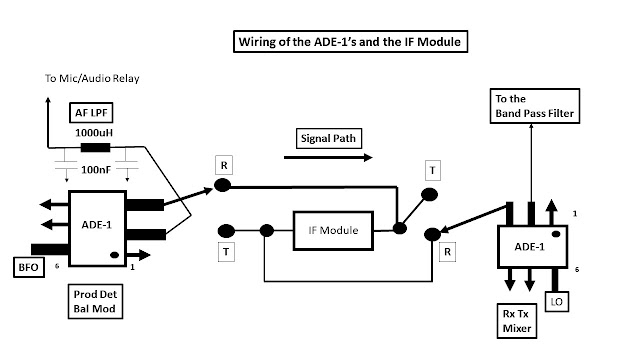Talk About Jaw Dropping!
Here is what makes this unique and it wasn't until I made a block diagram that I realized the impact of the design.
I do appreciate how documentation can help facilitate the construction of a project. But my fear is that thinking that this would encourage potential homebrewers to take the leap it in effect discourages creativity. Building it like Pete may not be the best mousetrap. Certainly, there are a few who may move beyond that but that is the point they are the few and truth be known they would probably make that move regardless.
Help is one thing enabling laziness is another. As I said before give me a schematic and my “fabrication process” kicks in to make the project a reality. An extensive documentation of a single project is not an inherent fabrication process to enable taking on other projects. The documentation of a single project is simply a by-product of the process –not the process itself.
Let me continue on my soapbox. I think in Modules and that is key to my fabrication process. Those who only want spoon feeding have missed the power of the module which is of course chunking a project into manageable pieces. With this process you can test as you go and downstream when you want to try an upgrade you deal with just a module and not destroy a whole radio to make one improvement.
From my perspective the documentation created for the PSSST is spoon feeding how to build it! Removed from that equation is an underlying process with the modular approach. Regrettably extensive documentation does discourage creativity.
Steerable modules have been used by me for some time which caused me to get hate
mail about the use of relays and why not diodes. Diode steering has been used
by me but my concern is signal isolation. That said the Steerable IF Module
(not just the Filter) is a 1st for me and it works.
There is another pet peeve -- despite the Herculean effort to create and include all details I still get emails --Why do you not connect R8 (50 Ohms) in the hardware but LT Spice shows R8. LT Spice also had a note R8 is a load used in the simulation; but not connected in hardware. I hope that guy gets a short in his coax! Documentation enables Laziness!
73's
Pete N6QW



